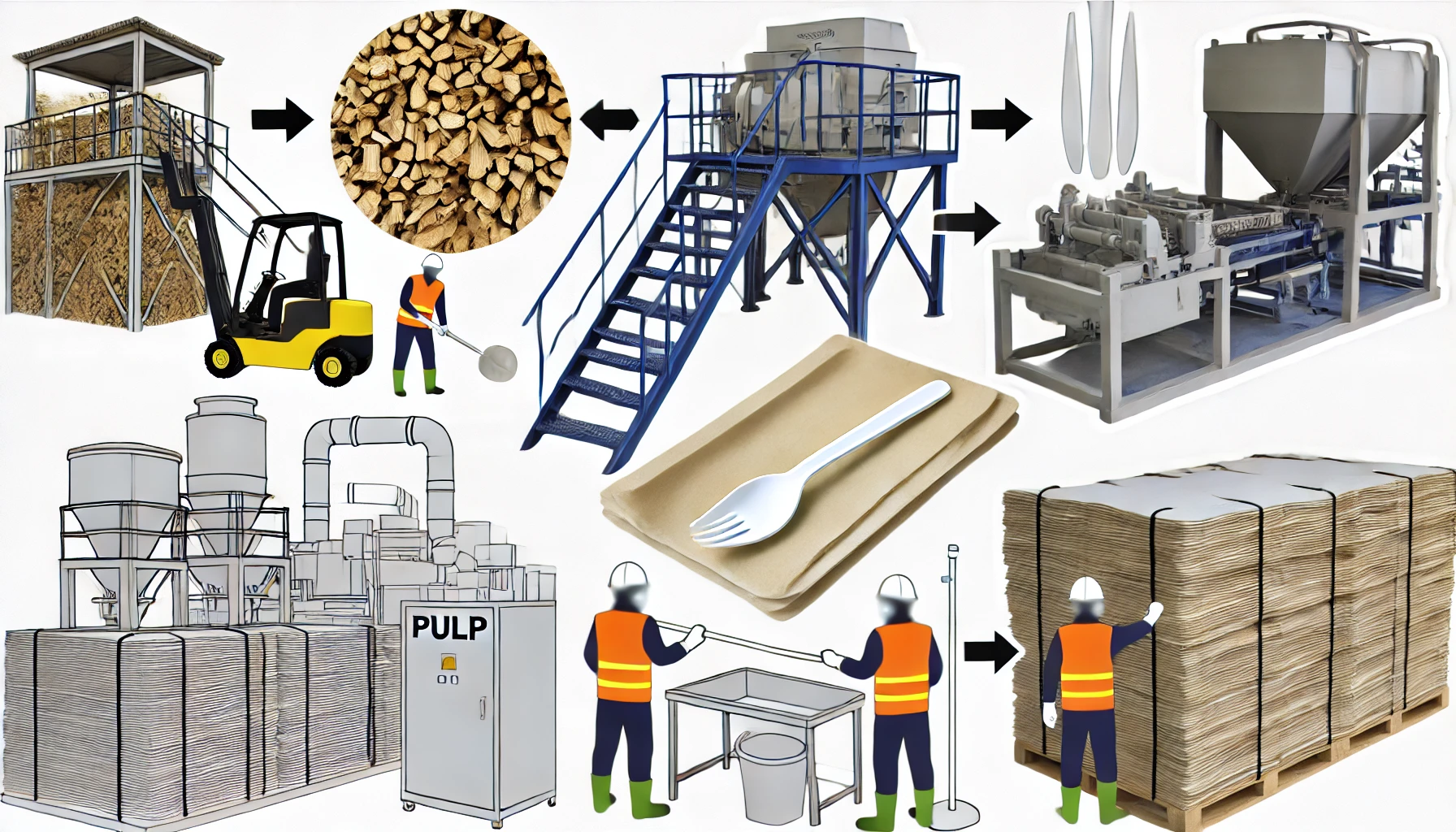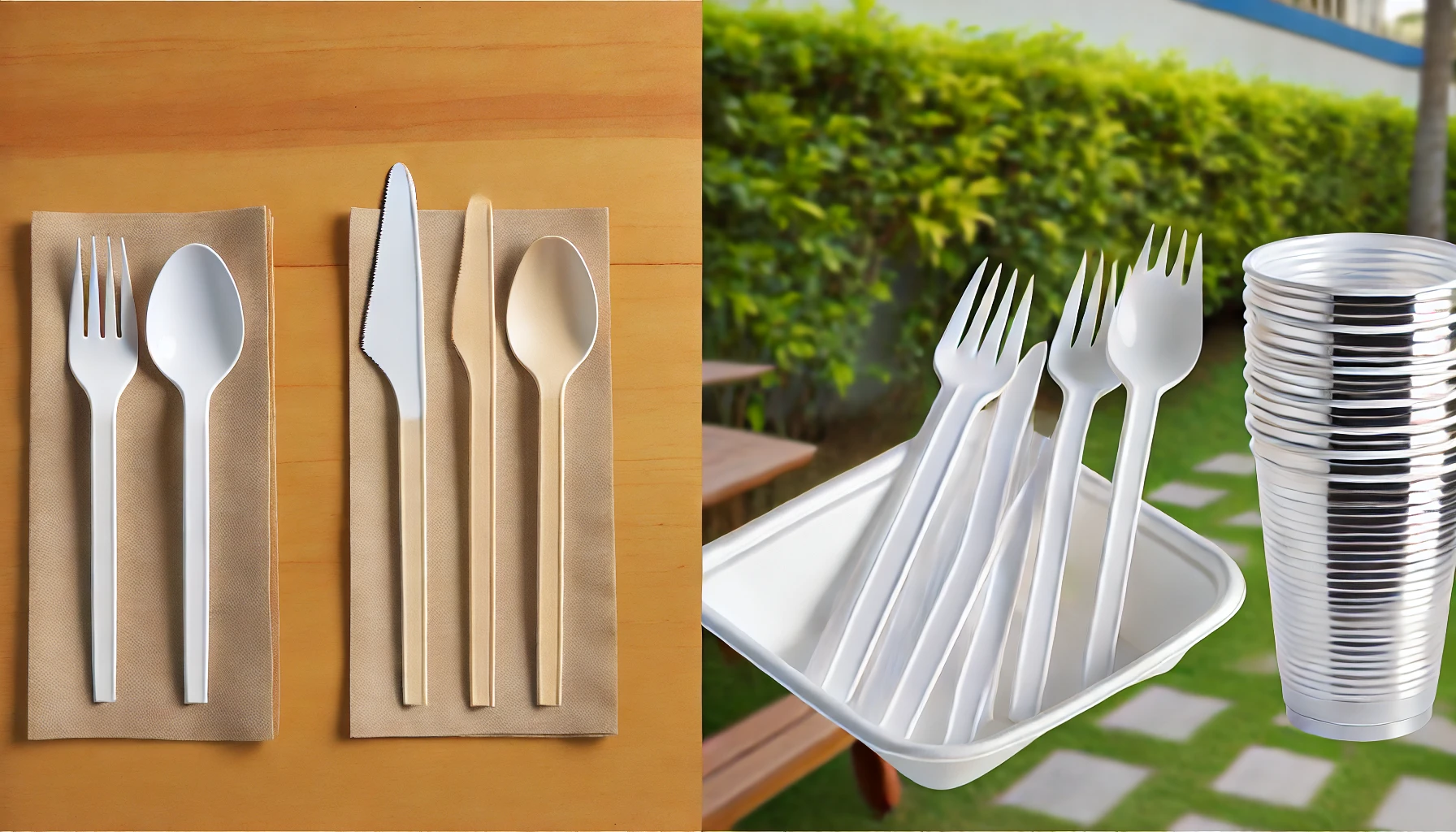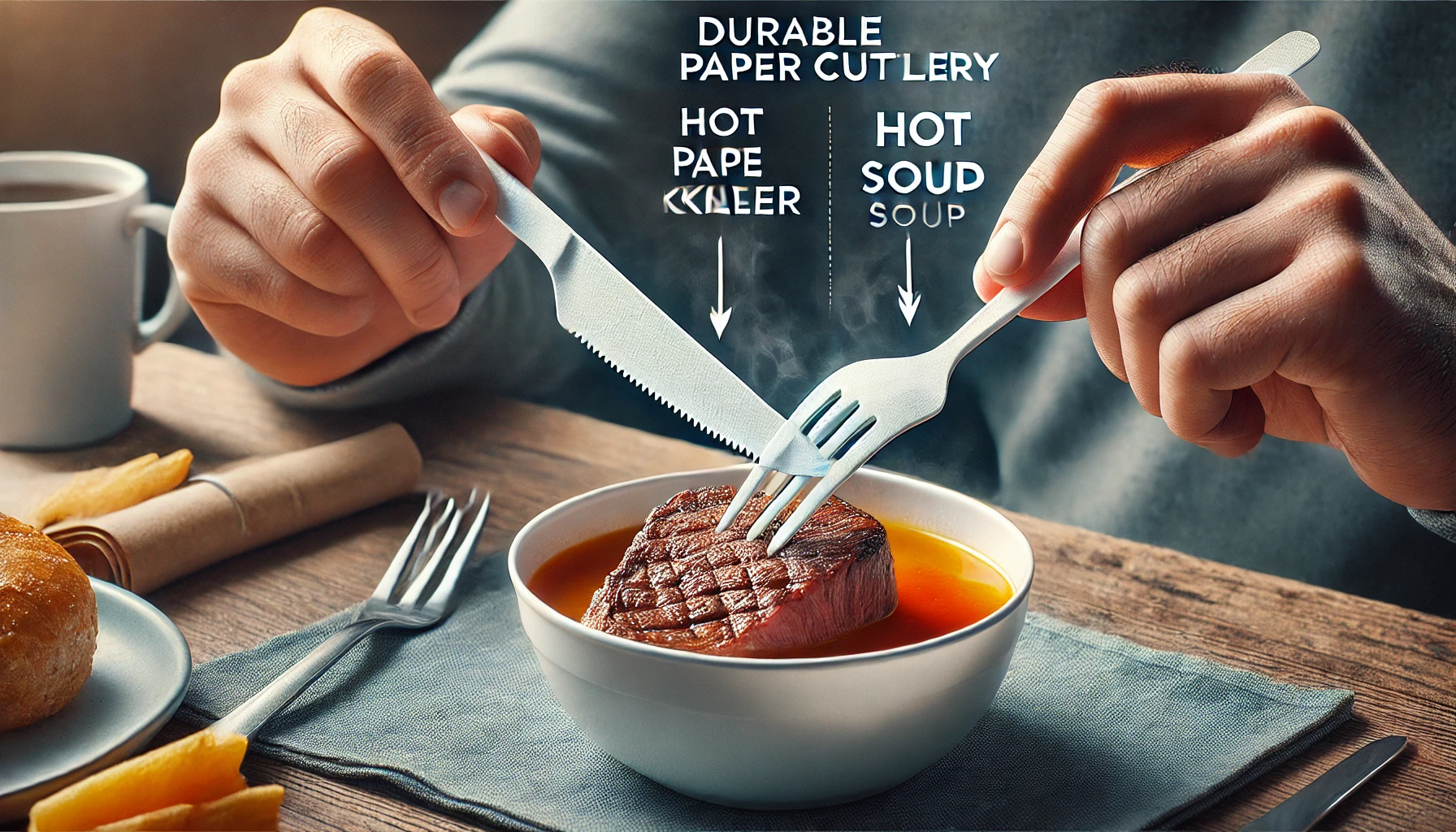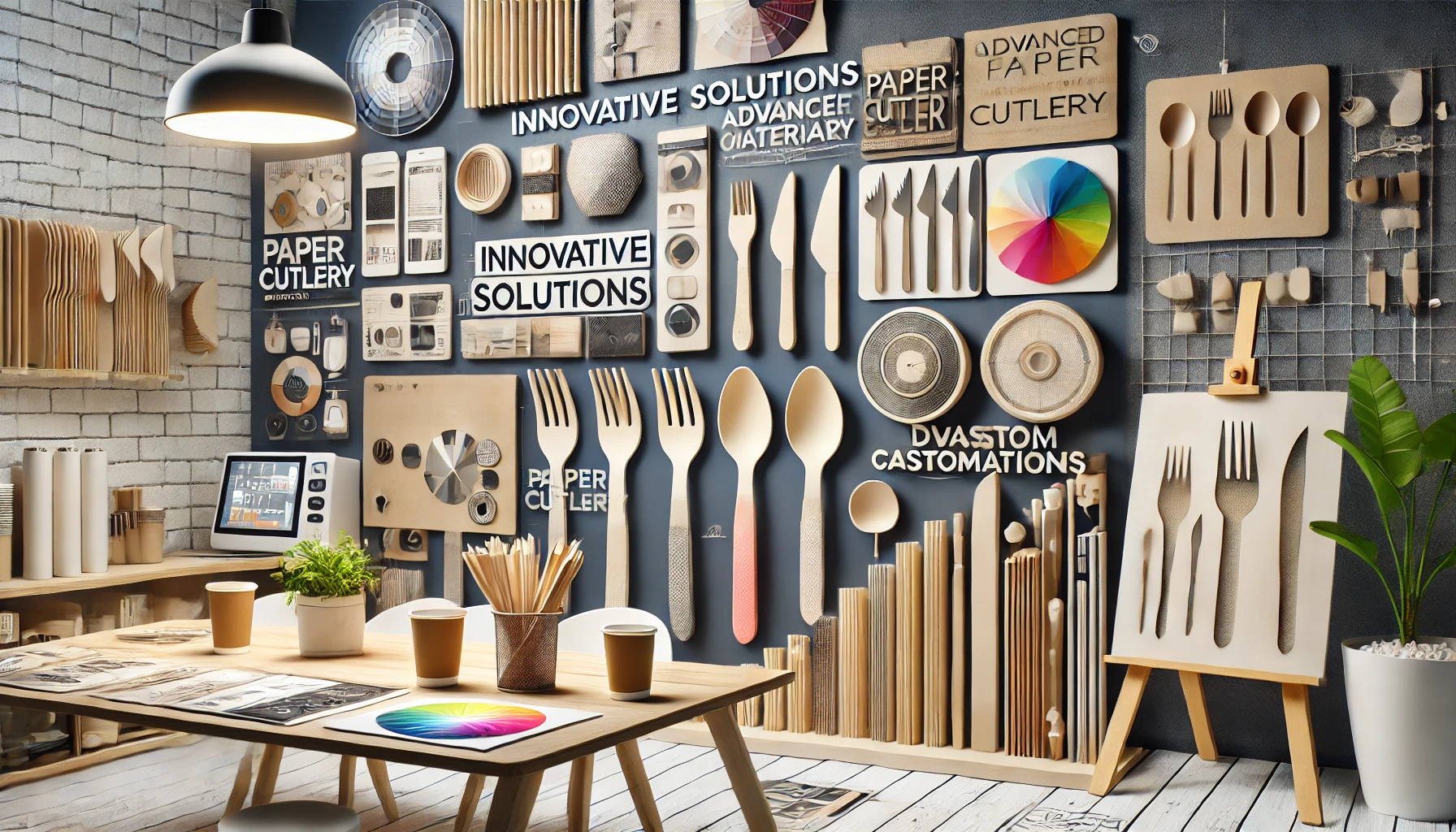Paper cutlery is becoming a popular alternative to traditional plastic utensils. It's made from renewable resources like FSC-certified paper. This type of cutlery is biodegradable and compostable. This means it breaks down naturally, reducing environmental impact. Unlike plastic, which can take hundreds of years to decompose, paper cutlery decomposes within a few months.
Switching to paper cutlery helps reduce pollution and reliance on single-use plastics. It’s an easy way to make a positive environmental impact. Paper cutlery can be used for various occasions, from picnics to takeout meals. Its production uses fewer resources compared to plastic, further enhancing its eco-friendly credentials.
In today's world, eco-friendly choices are crucial. Plastic pollution is a major environmental issue. Single-use plastics often end up in landfills and oceans, harming wildlife and ecosystems. Paper cutlery offers a sustainable solution to this problem. By choosing paper over plastic, we can significantly reduce plastic waste.
Using paper cutlery also supports sustainable practices. The materials used are often sourced from responsibly managed forests. This not only helps conserve natural resources but also promotes the use of renewable materials. Furthermore, paper cutlery is free from harmful chemicals like BPA and phthalates, making it a safer option for consumers.
The Rise of Paper Cutlery
Environmental Impact
Plastic cutlery has long been a staple due to its convenience and low cost. However, its environmental impact is significant. Plastic utensils take hundreds of years to decompose, leading to massive waste accumulation in landfills and oceans. This plastic pollution harms wildlife and ecosystems, contributing to the broader issue of environmental degradation.
To combat this, many are turning to biodegradable options like paper cutlery. Unlike plastic, paper cutlery breaks down naturally within months, greatly reducing environmental harm. This shift represents a growing awareness and commitment to sustainable practices.
Plastic Waste
Statistics reveal the staggering scale of plastic pollution. Millions of tons of plastic waste are produced annually, with a significant portion being single-use cutlery. These items often end up in oceans, where they pose a threat to marine life. For instance, plastic utensils are among the top items found during coastal cleanups.
Sustainable Alternatives
Paper cutlery emerges as a viable solution to this problem. It is made from renewable resources like FSC-certified paper, ensuring sustainable forestry practices. By choosing paper cutlery, consumers can significantly reduce their reliance on single-use plastics, helping to alleviate the burden on the environment.
Manufacturing Process of Paper Cutlery

Materials Used
The primary material for paper cutlery is FSC-certified paper. This certification ensures that the paper comes from responsibly managed forests. Other renewable resources, like bamboo and sugarcane bagasse, are also used. These materials are biodegradable and compostable, making them ideal for sustainable cutlery.
Production Steps
Pulp Creation
The process begins with transforming wood chips into pulp. The wood chips are broken down into small fibers through mechanical or chemical processes. This pulp forms the base material for paper cutlery.
Molding and Pressing
Next, the pulp is molded and pressed into the desired shapes. This involves using high-pressure machines to ensure the cutlery is sturdy and durable. The pressing process also helps in achieving the right thickness and strength.
Quality Control
Ensuring the safety and durability of paper cutlery involves rigorous testing. Each batch undergoes quality checks to meet food safety standards. Tests include checking for chemical residues and physical strength. This step ensures that the cutlery is safe for use and can withstand various food types.
Durability of Paper Cutlery
Strength and Sturdiness
Paper cutlery is designed to be both strong and sturdy, making it a reliable alternative to plastic utensils. It can handle a variety of foods, both hot and cold, without losing its integrity. Unlike some other biodegradable options, paper cutlery maintains its structure when used with hot foods, ensuring it doesn't become soggy or weak. This makes it suitable for a wide range of dining experiences, from picnics to formal events.
Hot and Cold Foods
One of the significant advantages of paper cutlery is its ability to withstand both hot and cold foods. The material used in high-quality paper cutlery is treated to endure temperatures typically encountered in food service. This means that whether you are enjoying a hot soup or a cold salad, paper cutlery remains functional and safe to use. This resilience is crucial for maintaining user confidence and convenience during meals.
Comparative Analysis
When compared to plastic and other biodegradable options, paper cutlery holds its own in terms of durability. Plastic cutlery, while durable, poses severe environmental risks due to its non-biodegradable nature. On the other hand, some biodegradable utensils, like those made from bamboo or wood, may splinter or break more easily. Paper cutlery strikes a balance by offering a durable, eco-friendly option that doesn't compromise on performance. It is lightweight yet sturdy, making it a practical choice for everyday use and special occasions alike.
| Material | Durability | Eco-Friendliness | Temperature Resistance |
| Plastic | High | Low | High |
| Bamboo | Medium | High | Medium |
| Wood | Medium | High | Medium |
| Paper | Medium-High | High | High |
Innovations in Durability
Recent advancements in the production of paper cutlery have significantly improved its durability. Innovations include enhanced pressing techniques and the use of high-quality, FSC-certified paper. These improvements ensure that paper cutlery can handle the rigors of everyday use while remaining eco-friendly. Additionally, new treatments make paper cutlery more resistant to moisture and heat, further increasing its practical applications.
Manufacturers continue to invest in research and development to enhance the strength and usability of paper cutlery. These efforts aim to make it a viable and superior alternative to plastic cutlery, supporting a sustainable future. As technology advances, we can expect even more durable and versatile paper cutlery options to emerge, providing consumers with reliable, eco-friendly choices.
Safety of Paper Cutlery
Non-Toxic Materials
Chemical Safety: Paper cutlery is crafted using BPA-free and phthalate-free materials. This ensures it does not leach harmful chemicals into food. Traditional plastic cutlery often contains these toxic substances, which can pose health risks when they come into contact with hot foods. In contrast, paper cutlery offers a safer alternative, maintaining the integrity and safety of the food it touches.
Food Safety
Compliance Standards: Paper cutlery complies with stringent food safety standards to prevent contamination. These standards ensure that the materials used in the production process are safe for food contact. Rigorous testing is conducted to verify that no harmful substances are present, making paper cutlery a reliable choice for consumers.
Heat Resistance
Performance with Hot Foods: One of the key features of paper cutlery is its ability to withstand hot foods. Unlike some biodegradable alternatives that may degrade or release substances when exposed to heat, high-quality paper cutlery remains stable. This ensures that it does not compromise food safety or structural integrity, even when used with hot meals.
Environmental Benefits

Biodegradability and Compostability
Decomposition Time: Paper cutlery decomposes naturally within a few months, significantly faster than plastic cutlery, which can take hundreds of years to break down. This rapid decomposition helps reduce the accumulation of waste in landfills and the environment.
Composting: Paper cutlery can be composted at home or in industrial facilities. When composted, it breaks down into natural elements that enrich the soil, making it an excellent choice for eco-conscious consumers. This contrasts sharply with plastic cutlery, which contributes to long-term environmental pollution.
Resource Efficiency
Sustainable Forestry: The production of paper cutlery involves sourcing materials from sustainably managed forests. This practice ensures that the raw materials used are renewable and harvested in an environmentally responsible manner. Sustainable forestry practices help maintain biodiversity and ecosystem health, contributing to a more sustainable planet.
Lower Environmental Footprint: Producing paper cutlery typically requires fewer resources and generates less pollution compared to plastic cutlery. The manufacturing process for paper cutlery is more energy-efficient and results in lower greenhouse gas emissions. This makes paper cutlery a more sustainable option, aligning with global efforts to reduce environmental impact.
Challenges and Limitations
Durability Concerns

Paper cutlery, while eco-friendly, faces challenges regarding durability. For certain types of food, especially tough or dense items, paper cutlery might not perform as well as plastic or metal alternatives. It can sometimes bend or break under pressure, making it less ideal for foods that require a sturdier utensil. This limitation is a key consideration for both consumers and businesses when choosing cutlery options.
Moisture Sensitivity
Another significant limitation of paper cutlery is its sensitivity to moisture. When exposed to liquids for extended periods, paper utensils can soften and lose their structural integrity. This makes them less suitable for dishes with high moisture content or prolonged use. Despite advancements in coating technologies, moisture remains a challenge that can affect the overall performance of paper cutlery.
Cost and Availability
In terms of cost, paper cutlery can be more expensive than traditional plastic cutlery. The production process and the materials used contribute to higher prices. Additionally, while the availability of paper cutlery is increasing, it is still not as widespread as plastic options. This can limit its adoption, particularly in regions where plastic cutlery is more readily available and affordable.
Innovative Solutions

Advanced Materials
To address the challenges of durability and moisture sensitivity, manufacturers are developing advanced materials for paper cutlery. Innovations include stronger, more heat-resistant papers and specialized coatings that improve moisture resistance. These advancements aim to enhance the usability and lifespan of paper cutlery, making it a more viable alternative to plastic.
Customizations
Businesses can take advantage of the customization options available with paper cutlery. Custom-printed paper cutlery allows companies to showcase their brand, create unique dining experiences, and reinforce their commitment to sustainability. This not only enhances brand visibility but also attracts eco-conscious customers.
Case Studies
Several restaurants and events have successfully implemented paper cutlery, demonstrating its practical applications. For example, eco-friendly eateries often use customized paper cutlery to align with their sustainable branding. Large events, such as music festivals, have adopted paper cutlery to reduce their environmental impact. These case studies highlight the versatility and benefits of paper cutlery in real-world scenarios.
Conclusion
Summary
Paper cutlery offers numerous benefits, making it an excellent alternative to traditional plastic utensils. It is biodegradable, compostable, and made from renewable resources, significantly reducing environmental impact. Paper cutlery also avoids harmful chemicals like BPA and phthalates, ensuring food safety. However, it faces challenges in terms of durability for certain foods and sensitivity to moisture. While more costly and less available than plastic, ongoing innovations are improving its performance and practicality.
Future Outlook
The future of paper cutlery looks promising. Advancements in materials and production processes are addressing current limitations, making it more durable and moisture-resistant. As consumer awareness of environmental issues grows, the demand for sustainable products like paper cutlery is expected to rise. Businesses are increasingly adopting eco-friendly practices, which will likely lead to wider adoption and further innovations in paper cutlery.
Call to Action
Businesses and consumers play a crucial role in promoting sustainability. By choosing paper cutlery over plastic, they can significantly reduce plastic waste and its harmful effects on the environment. It’s a simple switch that can have a substantial positive impact. We encourage everyone to consider making this change for a more sustainable future. Supporting companies that prioritize eco-friendly practices and products will drive the market towards greener solutions.















